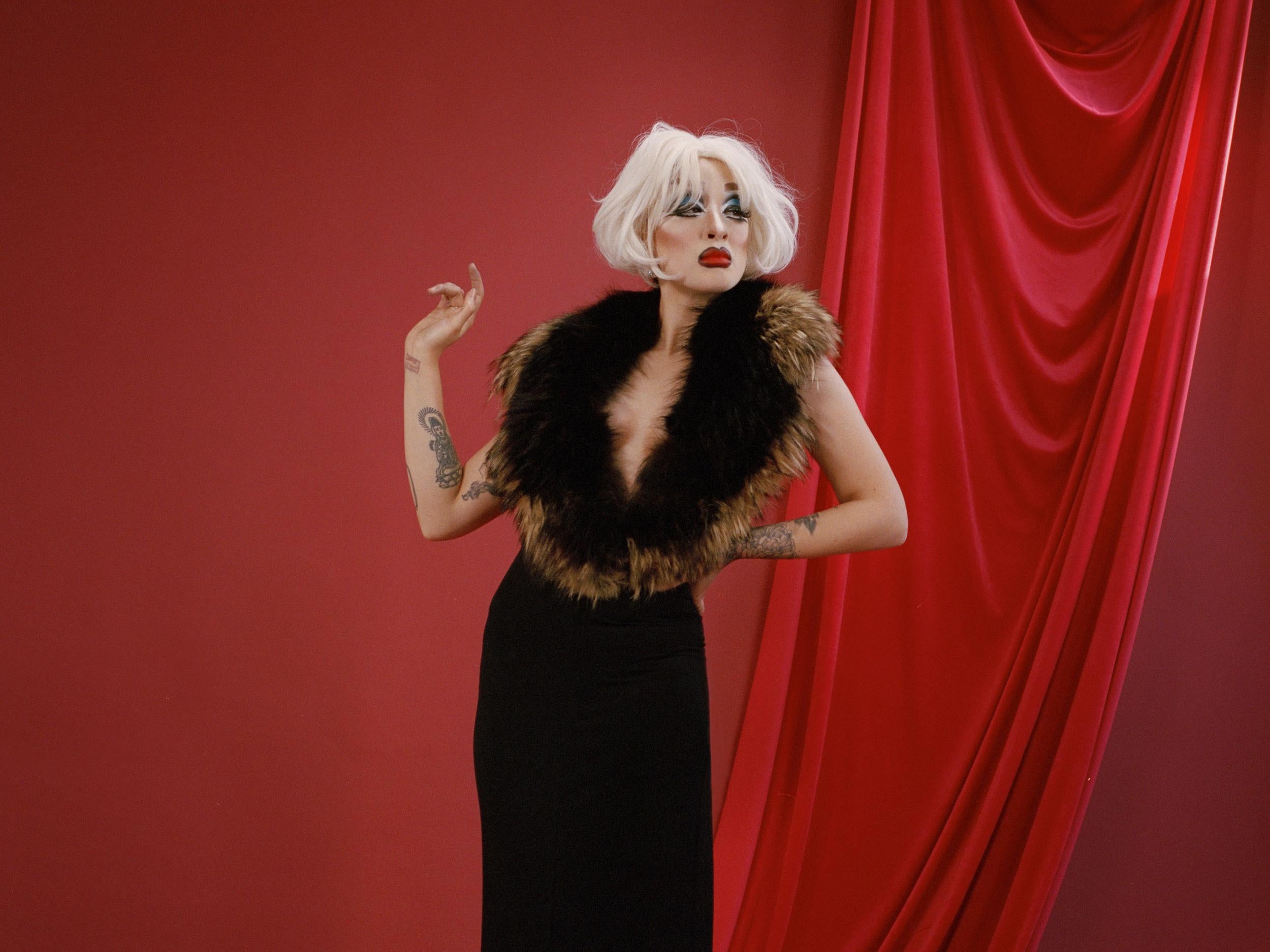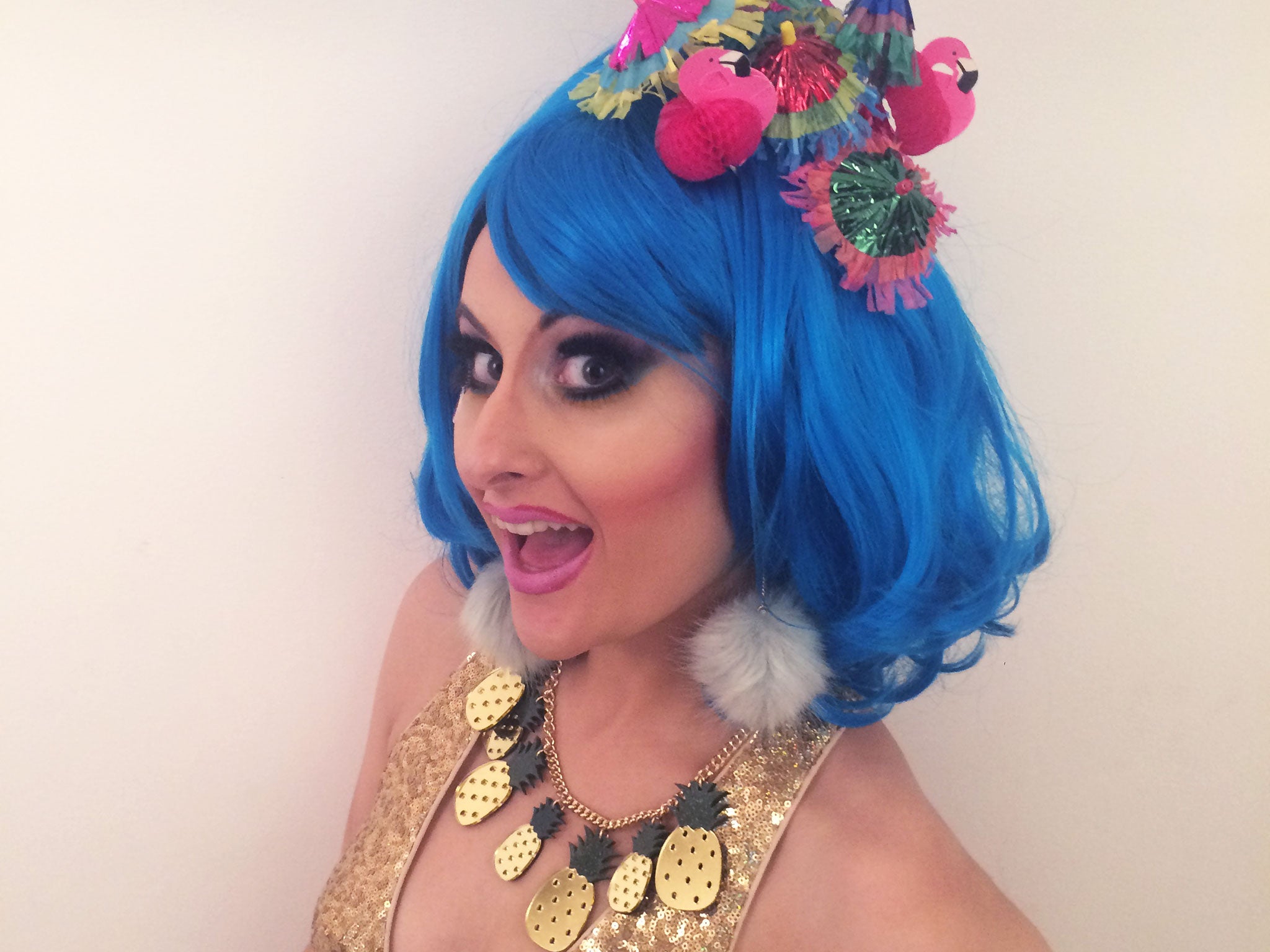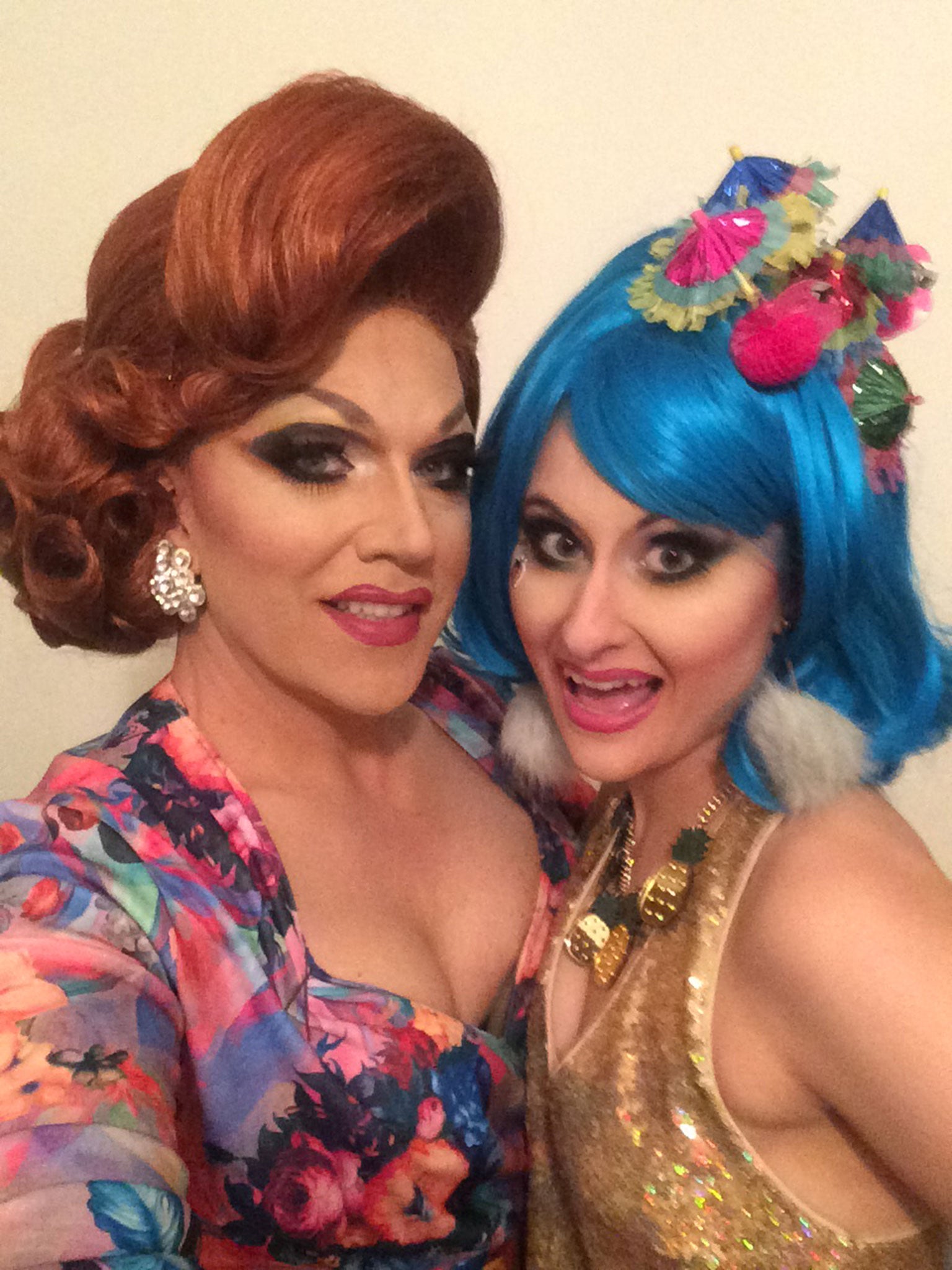Can a woman be a drag queen? I spent a day with a RuPaul's Drag Race contestant to find out
What’s it like to be a female drag queen? There’s really only one way to know. Self-confessed drag addict Kashmira Gander glammed up, took a deep breath and hit the stage...
Your support helps us to tell the story
From reproductive rights to climate change to Big Tech, The Independent is on the ground when the story is developing. Whether it's investigating the financials of Elon Musk's pro-Trump PAC or producing our latest documentary, 'The A Word', which shines a light on the American women fighting for reproductive rights, we know how important it is to parse out the facts from the messaging.
At such a critical moment in US history, we need reporters on the ground. Your donation allows us to keep sending journalists to speak to both sides of the story.
The Independent is trusted by Americans across the entire political spectrum. And unlike many other quality news outlets, we choose not to lock Americans out of our reporting and analysis with paywalls. We believe quality journalism should be available to everyone, paid for by those who can afford it.
Your support makes all the difference.They, whoever “they” are, always say that you should get out of your comfort zone from time to time. So, naturally, I took this advice to its logical conclusion and decided to perform on stage as a female drag queen. Perhaps I should start from the beginning…
I’m addicted to drag culture. And as my social media accounts are plastered with photos of my favourite queens, it wasn’t long before someone threw down the gauntlet and challenged me to quit fawning and give it a damn go myself.
Like many people relatively new to the scene, I was first introduced to drag culture – other than at my local Pride parade – by watching RuPaul’s Drag Race. The cult reality TV show sees RuPaul – the queen of queens, affectionately referred to as Mamma Ru – challenge 12 performers to fight for the title of America’s Next Drag Superstar. Now in it’s eight season, the show is the Olympics of drag and a tongue-in-cheek mixture of America’s Next Top Model and Project Runway-style challenges, involving staples of the culture from lip-syncing to costume design. But what makes it addictive is its mission to humanise drag queens and challenge gay stereotypes.
With a style to suit every taste, from camp and crass to high-fashion, drag doesn’t take itself too seriously but can be deeply political and subversive. What’s not to love?

Mrs Kasha Davis, the highly glamorous and self-styled boozy “international housewife”, is among the 100 queens to have made it onto the cult show - an opportunity that can take a performer from gigging in local clubs to touring the globe.
So when one of her people asked if I’d like Mrs Kasha Davis to help me piece together a drag persona, and perform on stage at one of her shows at London's iconic Royal Vauxhall Tavern, I had to say yes. I would be lip-syncing before her one-woman autobiographical show. There's Always Time for a Cocktail is a gripping and often funny tale of life as a young man in small-town Pennsylvania in the 1970s and 80s. Using vignettes from her life – including divorcing a woman and her turbulent relationship with her father – she explores gender identity and what it means to be a gay man. I certainly felt the pressure to deliver.
But a question remained. How can a woman be a drag queen, when a drag queen is a man dressed as a woman? This issue has divided the drag community – with bio, or “faux”, queens defending their right to perform alongside their male counterparts. The answer comes down to the fact that drag is about more than just a man wearing a dress, but about questioning gender stereotypes and the norms we are expected to conform to – norms that can stifle us all – all while putting on a blinding show.
“When men do drag they are playing with and sending up femininity. We have as just as much a right to do this as they do. We live it,” says Fauxnique, a San Francisco-based performance artist who has been a bio queen since 2003.
Another issue of contention is whether a straight, cisgendered woman – such as myself – has the right to take the stage in a gay bar: one of the few places where those who identify as LGBTQIA (lesbian, gay, bisexual, transgender, queer, intersex, asexual) can let go without judgement. RuPaul’s Drag Race has propelled drag into living rooms across the globe, creating a new fanbase of straight cisgendered females who would not have otherwise been exposed to the intimacies of the scene. Members of the LGBTQIA community have complained that increasing numbers of straight women are visiting gay clubs without respecting why such spaces exist. The worst offenders cling onto tired stereotypes that gay men are tirelessly fabulous and one dimensional, and see queens more as curious toys rather than human beings. Some queens have even reported that women have invaded the stage mid-performance without invitation.

I ask Victoria Sin, a bio queen based in London, her opinion on this thorny issue. She, and other queens, caution me that those who do not identify as LGBTQIA should be respectful and consider how important spaces such as gay clubs are to a community that, despite having come leaps and bounds in terms of legal rights, is still widely marginalised.
“Identifying as part of the LGBTQIA community is not just about sexuality, as actually some 'straight' people also identify as queer and a lot of trans people are straight as well,” she explains. “It's more about contributing the the community rather than acting as a tourist within it, and respecting that it's important for queer people to take up space.”
But she stresses: “I think it's good to recognise your privilege in these situations, but as a woman you shouldn't feel like you can't call out misogynist behaviour when it is happening to you within these spaces.

“The screaming girls who expect you to be their best friend, share make-up tips or play their stupid requests get right on my knockers,” says Holestar, a veteran of the London bio queen scene who has faced opposition for being a woman.
But she adds: “If someone wants to exclude you for your gender or sexual preference, then they are a bigot. You do whatever you want, just be cool about it and don't screech at drag queens, like a rabid One Direction fan, or paw at us. That really pisses us off.”
And when I arrive at Vauxhall Tavern on the night of my debut, one thing becomes terrifyingly clear: anyone can be a drag queen if they are willing to camp it up and give it all they’ve got as much as the next guy.
During rehearsals, Mrs Kasha Davis summons me to reveal the performance I have been working on at home. Having not graced a stage since secondary school and praying that my set is worthy of introducing a seasoned queen, I crumble. My face is frozen into a look of terror that I can’t shift as I dance to “Let’s Have a Kiki” by The Scissor Sisters: a song ironically about having a brilliant time.
“Do what you’re doing now, but times it by a million,” she graciously suggests, as she fluidly dances to the song she has just heard.
With minutes to go until I let loose my new drag persona, Trashmira, on stage, she puts the finishing touches to my make up backstage. Gently brushing eyeshadow on to my face before securing a thick, black set of eyelashes on top, she calms my nerves by describing the beginnings of Mrs Kasha Davis and what makes a perfect drag show, and suggests that I take a few more sips of my cocktail.
“I want to express a side of me that is me with an exclamation mark. Mrs Kasha Davis is my mum, my aunts and great aunties who would give you a big kiss, ‘MWAH!’, and your ear would be ringing for the rest of the day.
“I’ve always been inspired by strong women. Part of creating this different character, it’s not just about, you know, a man in a dress. It was originally just going out and having fun but then it turned into a character that I was portraying and I wanted to convey.
“I think when you perform you have to give it your absolute all. When queens are performing but they're not committed, I get annoyed. Man, woman, trans, whatever – there’s no use doing it if you're just doing it by half. I always say there’s no such thing as bad drag and sometimes the worst drag is the best drag. It's magic when you put on drag and perform. Hopefully you’ll see that tonight.”

Eyelash glue dried, a mountain of pins keeping my electric-blue wig in place, and squeezed into a gold sequinned gown, it’s time to make my debut. I strut on to the stage. I feel like a rabbit in the headlights, or, more accurately, a bio queen in the stage lights.
During rehearsals the audience area had been starkly lit, and I'd feared I'd be able to make out the expressions of those in the crowd. But with the house lights down, the audience becomes a welcome blur of faces. Hand on my hip I stare out into the crowd, trying to embody the powerful, confident queens who inspire me.
In a juggling act between not vomiting with fear and remembering Mrs Kasha Davis’ last-minute pointers, I try to accentuate every movement I make. As the audience cheers and laughs – with me, not at me – my nerves ease ever so slightly. I even manage to throw an improvised wink out to the crowd, and run a hand up my extended leg in a vague attempt at seeming seductive.

As the song ends and my four minutes on stage come to a close, I take my final pose, my body turns off auto-pilot and I start to feel lost once more.
Mrs Kasha Davis encourages the audience to cheer, and asks me how I feel. I manage to muster up her catchphrase, “It was a hoot and a holler!” into the mic, and scurry of the stage. I have survived.
With a racing heart and sweating body, I join the rest of the audience to watch a professional at work, and wait for the adrenaline to wear off.
Something that everyone should try at least once in their lifetime, being in drag proves that gender is wonderfully malleable, and allows you to live the fullest version of yourself for an evening. And most importantly as I took to the stage, I learnt that if all else fails, just close your eyes, spin around a few times, and let the music lead the way.

Join our commenting forum
Join thought-provoking conversations, follow other Independent readers and see their replies
Comments